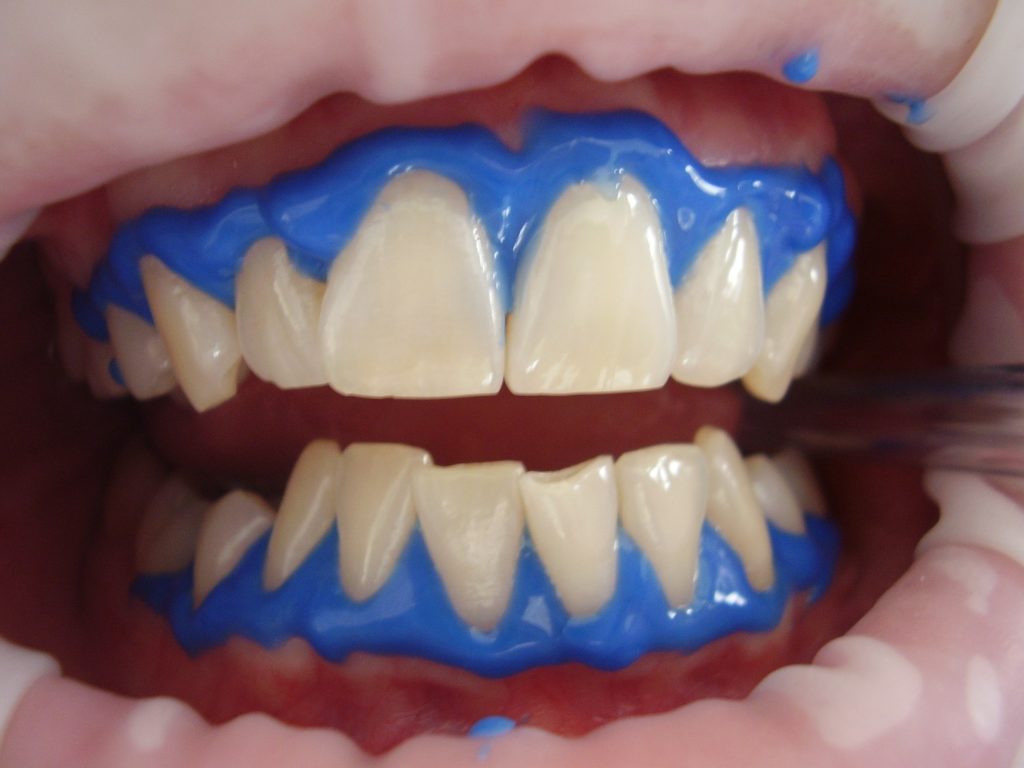Teeth whitening can help to increase your self-esteem, boost your social interactions, and even raise your confidence in your professional life. From whitening toothpaste to a laser in-office treatment, there are plenty of ways to remove stains. The question is, does laser teeth whitening have side effects?
The simple answer is yes — particularly when it’s not performed by a professional. In addition, too much whitening can ultimately damage your teeth and gums.
Here are the most common side effects of laser and tray teeth whitening and how to minimize them with the help of a dentist.
Hypersensitivity to Foods and Pressure
A major side effect of teeth whitening is hypersensitivity. Your teeth may feel uncomfortable when exposed to acidic foods, cold, or pressure. This occurs because the hydrogen peroxide in whitening strips can damage the dentin, your tooth’s protein-rich middle layer. This layer features nerve tissue and transmits sensations from your tooth.
How sensitive your teeth become after whitening depends on your dental condition. Let’s say that you already have subpar oral health or sensitive teeth. You will likely experience high sensitivity following a whitening treatment. Meanwhile, if you take good care of your teeth and clean them regularly, you may not experience as much hypersensitivity.
As a general rule of thumb, you shouldn’t experience tooth sensitivity for more than three days following a professional session of teeth whitening. If you suffer from hypersensitivity for more than seven days, you should immediately consult your dentist.
Erosion of the Enamel
Noteworthy laser and tray teeth whitening side effects also include the loss of enamel, the outer surface of your teeth. Enamel erosion may occur following whitening treatment if bleaching agents are used excessively in the treatment. This is particularly true for patients who have sensitive teeth.
To prevent enamel erosion, you should choose a whitening formula that contains calcium, fluoride, and potassium nitrate. These agents provide defense against tooth surface loss. Fortunately, a reputable dentist can provide you with a quality whitening treatment that will minimize erosion loss.
Pain in the Teeth
Laser and tray teeth whitening side effects can include tooth pain, which again may result from enamel erosion. Sometimes your tooth pain is due to an underlying condition such as a cavity or gum disease, including gingivitis and periodontitis. Teeth whitening will not make gum disease worse, but it can irritate the already sensitive gum tissue, creating more pain than usual.

Gum Irritation
The top side effects of teeth whitening also include temporary gum irritation, even if the bleaching agents used on your teeth are diluted. If you have sensitive teeth, you are more likely to experience post-treatment gum irritation, particularly if you whiten your teeth with trays or strips.
It is normal for gum irritation to last for 1-2 days after a whitening treatment. However, if the discomfort exceeds three days, you should have your dentist examine your mouth right away. Chances are that the strip you used contained bleaching agents at too high of a percentage. As mentioned, too much whitening can damage your teeth and gums. It’s also possible that you used your over-the-counter whitening product incorrectly or used it too frequently.
Irritation to the Throat
Common side effects of teeth whitening also include throat irritation, which might occur if you accidentally ingest a portion of your whitening solution. For 1-2 days, you might feel like you have a tingly, sore, or scratchy throat. If this sensation lasts longer, you should see your dentist.
Uneven Tooth Shade
This is yet another side effect of teeth whitening, particularly for patients with restorations like dental crowns, dental implants, and dental veneers. That’s because when you whiten your teeth, the bleach won’t change your restored teeth’s color — only that of your natural pearly whites. This may lead to shade differences between your restorations and your natural teeth, resulting in an uneven smile. For this reason, whitening may not be the best option for you if you have visible implants or veneers on your front teeth.
Dry Mouth
Finally, laser and tray teeth whitening side effects also include dry mouth. This might occur because bleaching agents, like carbamide peroxide and hydrogen peroxide, may dry out your teeth after entering your tooth enamel.
This problem should subside several hours after your teeth whitening treatment. However, if the problem persists, your dentist should examine your mouth. If you already struggle with dry mouth, avoid using over-the-counter whitening products unless your dentist has approved for you to do this.

Minimize Teeth Whitening Side Effects with the Help of Alondra Dental Care
Do-it-yourself or at-home whitening is generally more likely to cause problems than dentist-supervised whitening treatments. For this reason, it’s best to see your dentist for teeth whitening.
At Alondra Dental Care, whitening teeth is our specialty. We have provided successful whitening services in Long Beach and Norwalk for more than a decade. Our staff will create a specialized mouthguard to hold the bleaching agent against your teeth for just a few hours per day. We personalize each treatment to meet the patient’s specific needs, and we consider all aspects of the patient’s oral health history to minimize complications.
Many of our patients see results in just a few weeks. Teeth whitening with over-the-counter products can cause damage, but our dentist-supervised treatment prioritizes your safety while delivering noticeable results.
Get in touch with us today to learn more about our teeth whitening services and schedule an appointment to make your smile brighter.




